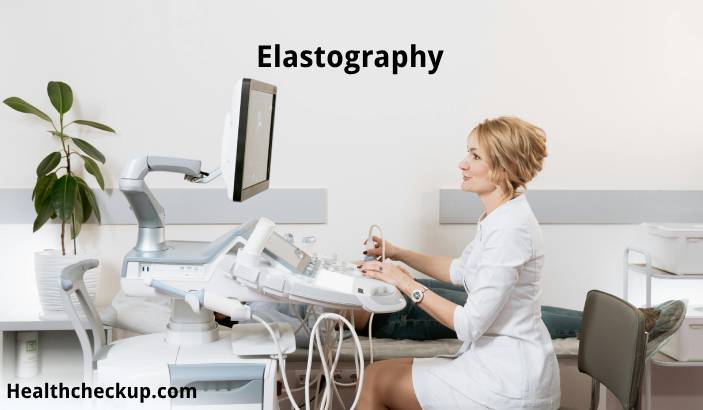Elastography is a diagnostic technique that measures the elasticity or stiffness of soft tissue to help diagnose various diseases, particularly in the liver and breast, but also in other organs such as the thyroid and prostate. This non-invasive method has become increasingly important in medical imaging, providing critical information that helps in the early detection and management of diseases. This article explores elastography technique, discussing its purpose, preparation, procedure, results interpretation, and potential risks.
Purpose of Elastography
- Liver Disease Assessment: It is primarily used to evaluate liver stiffness, which is indicative of fibrosis and cirrhosis. This method offers a non-invasive alternative to liver biopsy.
- Breast Lesion Evaluation: It helps differentiate benign from malignant breast lesions based on their stiffness, aiding in the management and treatment planning of breast cancer.
- Prostate and Thyroid Gland Analysis: Used for assessing suspicious areas in the prostate or thyroid that may be difficult to analyze using traditional imaging methods.
- Monitoring Treatment: It can monitor tissue changes over time, providing feedback on the effectiveness of treatment for various medical conditions.
Preparation for Elastography
- Fasting: Patients may need to fast for several hours before the procedure, especially for liver elastography, to reduce abdominal gas that can interfere with the accuracy of the test.
- Medication: Inform your doctor about any medications you are taking. Some may need to be paused or adjusted before the test.
- Clothing: Wear comfortable, loose-fitting clothing. You may be asked to change into a hospital gown.
- No Special Physical Preparation: Unlike some diagnostic tests, this test generally does not require any physical preparation other than positioning during the imaging process.
Procedure of Elastography
- Initial Setup: Similar to an ultrasound exam, you will typically be asked to lie down on an examination table.
- Application of a Conductive Gel: A technician will apply a water-based gel to the area being examined. This gel helps to transmit the ultrasonic waves used in the imaging process.
- Using the Ultrasound Transducer: The technician will press a small device called a transducer against your skin, moving it around the area of interest to capture images.
- Types of Elastography:
- Transient Elastography: Involves vibrations that are sent through the liver to measure its stiffness.
- Shear Wave Elastography: Uses the ultrasound machine to generate shear waves, which provide a quantitative measure of tissue stiffness.
- MR Elastography: Combines MRI with sound waves to create a visual map (elastogram) showing stiffness of body tissues.
Results Interpretation
- Normal Results: Indicate normal tissue elasticity, suggesting the absence of significant fibrosis or other structural abnormalities.
- Abnormal Results: Increased stiffness can indicate the presence of fibrosis in organs like the liver or suspiciously hard lesions in the breast or prostate, which may require further investigation.
- Quantitative Measures: Some elastography results provide specific measurements, expressed in kilopascals (kPa), which correlate to tissue stiffness levels.
Risks Associated with Elastography
- Minimal Risks: Elastography is a safe procedure with very few risks, primarily because it’s non-invasive and does not involve radiation.
- Discomfort: Some discomfort may be experienced due to the pressure of the ultrasound transducer, especially if the targeted area is already tender or painful.
- Dependence on Technician Skill: The accuracy of elastography can depend on the technician’s expertise in performing the procedure and interpreting the results.
Elastography is a diagnostic tool in modern medicine that leverages the mechanical properties of tissue to aid in the diagnosis and management of various diseases. Its non-invasive nature, combined with the ability to provide immediate results, makes it an attractive option for both patients and doctors. As technology advances, the applications of elastography are expanding, enhancing its utility in medical diagnostics.
I specialize in writing about health, medical conditions, and healthcare, drawing extensively from scientific research. Over the course of my career, I have published widely on topics related to health, medicine, and education. My work has appeared in leading blogs and editorial columns.









